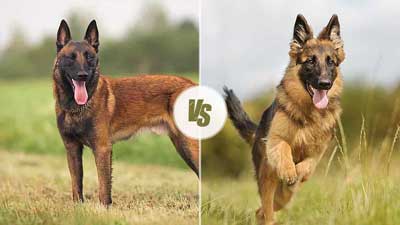- Size
- Smallest
- Small
- Small to Medium
- Medium
- Large
- Giant
- Characteristics
- Smartest
- Hypoallergenic
- Fluffy
- Best Guard
- Best Family
- Best for Kids
- Low Shedding
- Healthiest
- Police Dogs
- Most Calm
- Quietest
- Color
- White
- Black
- Grey
- Brown
- Blue
- Red
- Coat
- Hairless
- Short
- Long
- Origin
- Japan
- China
- Australia
- Germany
- Italy
- United States
- France
- Group
- Hound
- Terrier
- Herding
- Toy
- Working
- Sporting
Unveiling the Debate: Cropped Ears vs. Natural Ears in Dogs

Ear cropping is an elective surgical procedure that has been traditionally performed on certain dog breeds. It involves the removal of the flappy portion of the ear, followed by taping to train the ear cartilage into the desired position. While it was historically implemented for various reasons such as improving hearing, preventing ear infections, and for intimidation or protection purposes, these justifications have been mostly disproven or are no longer applicable today.
This article aims to provide a comprehensive understanding of ear cropping, including its historical context, controversies, and legal considerations.
Understanding Ear Cropping
Ear cropping is a surgical procedure involving the removal of a portion or the entirety of a dog's ear flap, often followed by taping to shape the cartilage into a desired form. This practice is prevalent in approximately 20 dog breeds, including Dobermans, Great Danes, Boxers, and Schnauzers, among others. While historically implemented for practical purposes such as hunting, fighting, and working roles, ear cropping is now primarily considered a cosmetic procedure.
Pros and Cons of Cropped Ears
Pros:
Breed Standards: In some breeds, ear cropping is done to adhere to established breed standards, emphasizing a specific aesthetic appearance.
Aesthetic Preferences: Some owners and breeders believe that cropped ears enhance the overall appearance of certain breeds, contributing to a distinctive and regal look.
Cons:
Ethical Concerns: Many argue that ear cropping is an unnecessary and potentially painful procedure, raising ethical questions about altering an animal's appearance for cosmetic reasons.
Health Risks: Ear cropping involves surgical risks and requires proper aftercare. The procedure can cause pain, and complications may include infection, prolonged healing, or adverse reactions.
Natural Ears
Pros:
Authentic Appearance: Natural ears are seen by many as a reflection of the dog's true and unaltered appearance, allowing the breed's natural characteristics to shine.
Ethical Considerations: Opting for natural ears aligns with an ethical standpoint that values the well-being of the animal and avoids unnecessary surgical interventions.
Cons:
Breed Standards: In some cases, adhering to breed standards without ear cropping may affect a dog's performance in conformation shows.
Subjectivity of Aesthetics: Beauty standards are subjective, and opinions on the attractiveness of natural ears versus cropped ears can vary.
Historical Reasons for Ear Cropping
Ear cropping was historically practiced in specific breeds such as Dobermans, Great Danes, Boxers, and Schnauzers. It was believed that cropping the ears would enhance hearing abilities, prevent ear infections, provide intimidation, and protect the dogs in certain roles such as hunting and fighting. However, these reasons have been debunked by studies and changing societal norms.
It is now widely acknowledged that ear cropping does not improve hearing or decrease the likelihood of ear infections. Moreover, the use of dogs in hunting and fighting has decreased, making these justifications less relevant.
Controversies Surrounding Ear Cropping
The practice of ear cropping has become increasingly controversial in recent years. Many countries and breed associations have banned the procedure due to ethical concerns and the lack of medical necessity. For example, Germany, where some of the commonly cropped breeds originated, has implemented a ban on ear cropping. Despite this, the practice remains legal in the United States and Canada, although there have been legal battles in some states to outlaw it. The American Veterinary Medical Association (AVMA) does not support ear cropping for cosmetic purposes, highlighting the unnecessary risks involved in any surgical procedure. Nonetheless, the American Kennel Club and Canadian Kennel Club continue to allow registration and showing of cropped dogs.
Legal Considerations of Ear Cropping
It is important to recognize that ear cropping is an elective and cosmetic procedure. As such, it is not necessary for the health or well-being of the dog. The surgery should only be performed by a qualified veterinarian to ensure the safety and proper care of the animal.
Unfortunately, some individuals attempt to perform the procedure at home, using crude methods that can result in pain, trauma, infection, and even the loss of the entire ear. It is imperative to consider the risks associated with any surgery and thoroughly discuss them with a qualified veterinarian before making a decision.
Important Factors to Know
Ear cropping is typically performed between 8-12 weeks of age when puppies can safely undergo anesthesia. Waiting too long can result in the cartilage hardening and adopting its permanent shape, making the procedure more difficult or ineffective. After the surgery, special care and training are required to facilitate the proper formation and standing of the ears. Weekly bandage changes and close monitoring may be necessary, increasing the risk of ear infections during the healing process. It is also essential to have a clear understanding of the desired ear crop style before the procedure is performed since it cannot be undone in most cases.
Veterinarians Who Offer Ear Cropping Services
While ear cropping is still offered by some veterinarians, it is crucial to find a qualified professional who prioritizes the animal's welfare and uses proper surgical techniques. These veterinarians aim to perform ear cropping with minimal pain and distress to the animal. It is recommended to conduct thorough research, seek multiple opinions, and consult with a trusted veterinarian to make an informed decision about the procedure.
Conclusion
Ear cropping is a procedure that has historically been implemented in certain dog breeds for various reasons. However, many of these justifications have been disproven or are no longer relevant in today's context. The practice is now considered elective and cosmetic, and its legality varies across countries and breed associations. It is important to approach ear cropping with caution, considering the risks involved and the ethical concerns associated with this procedure. Responsible pet owners should prioritize the well-being and health of their dogs and have open discussions with qualified veterinarians before making any decisions regarding ear cropping.
You May Also Like
 Breed ReviewsThe Reasons Why Some Dogs' Ears Flop Forward
Breed ReviewsThe Reasons Why Some Dogs' Ears Flop Forward Breed ReviewsWhy Do Some Dogs Have Droopy Ears?
Breed ReviewsWhy Do Some Dogs Have Droopy Ears? Breed ReviewsWhy Do Some Dog Ears Stand Up?
Breed ReviewsWhy Do Some Dog Ears Stand Up? Breed ComparisonBelgian Malinois vs. German Shepherd: Which Is Better?
Breed ComparisonBelgian Malinois vs. German Shepherd: Which Is Better? Breed ComparisonDoberman vs. Rottweiler: Which Is the Better Guard Dog?
Breed ComparisonDoberman vs. Rottweiler: Which Is the Better Guard Dog? Breed ComparisonAlaskan Malamute vs. Siberian Husky: Which Is Better?
Breed ComparisonAlaskan Malamute vs. Siberian Husky: Which Is Better?